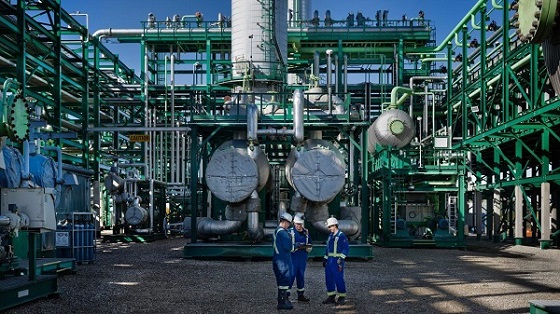Alberta
$1,200 Covid payment for 76,500 more Albertans including truck drivers, janitors, taxi drivers, security guards, farm workers, etc

More Albertans to receive $1,200 Critical Worker Benefit
76,500 more workers to receive a one-time payment to recognize the risks they have taken to support Albertans and the economy.
The Critical Worker Benefit is a joint federal-provincial program with $465 million available to recognize the hard work of critical workers during the pandemic.
During the first round of the Critical Worker Benefit Alberta’s government provided $1,200 payments to over 277,800 workers in the healthcare, social services, education and private sectors who deliver critical services to Albertans or support food and medical supply chains.
Workers in new job categories will be eligible for the same $1,200 payment. This includes workers in social services and the private sector who provided critical services to Albertans, were essential to the supply and movement of goods, and faced greater potential risk of exposure to COVID-19 through their work environments.
To be eligible for the benefit, employees must have worked a minimum of 300 hours during the period of Oct. 12, 2020 to Jan. 31, 2021. Support staff working in licensed child care must have worked a minimum of 243 hours during this period.
Eligible social services sector employers do not need to apply. Employers of support staff working in licensed child care programs, disability support workers providing independent living supports, respite, community access, and employment supports, and front-line workers in seniors-serving organizations and non-profit affordable housing providers will be contacted by the Government of Alberta to confirm details.
Eligible private sector workers making $25 per hour or less will also qualify for the benefit. These workers include: truck drivers, farmworkers, security guards, cleaners, funeral workers, employees at quick service and dine in restaurants and taxi drivers who can demonstrate they worked at least 300 hours during the eligibility period. The complete list of eligible workers for this phase of the program are available in the Application Guidelines for the private sector at alberta.ca/
Private sector employers can apply on behalf of employees at alberta.ca/
Employers will be responsible for distributing the $1,200 Critical Worker Benefit to their eligible employees.
Alberta’s government is responding to the COVID-19 pandemic by protecting lives and livelihoods with precise measures to bend the curve, sustain small businesses, and protect Alberta’s health care system.
Quick facts
- Alberta’s government contributed $118 million to the $465 million program.
- A total of about $367 million has been spent on about 289,800 workers.
- $355 million has been spent on about 277,800 workers in the phase one of the Critical Worker Benefit. This includes social services workers, health care workers, education workers and critical private sector workers, such as grocery cashiers, pharmacy assistants, and gas station attendants.
- Announced in April 2020, Alberta also used $12 million of the one-time federal funding along with a provincial investment totalling $30 million to date to provide a $2 an hour wage top-up for about 12,000 health care aides working in long-term care and designated supportive living facilities.
- About $99 million is available for about 76,500 workers in the social services and private sectors.
- The break down of benefit recipient is:
- Up to $18.5 million in the social services sector supporting 14,300 workers
- Up to $80.3 million in the private sector supporting 62,200 workers
Workers in the following private sector occupations are eligible to receive the Critical Worker Benefit:
- truck transportation, primarily engaged in the transportation of goods, in the following occupations:
- transport truck drivers
- light duty cleaners
- janitors, caretakers and building superintendents
- security guards and related security services
- material handlers
- dlivery and courier services drivers
- other trades helpers and labourers
- crop production, animal production or aquaculture directly involved in the production of food for human consumption
- funeral homes, cemeteries and crematoria
- not eligible: municipally-run funeral homes, cemeteries and crematoria
- security guards
- not eligible: private investigators, armoured car guard, house detective, personal bodyguards and security
- light duty cleaners, janitors and specialized cleaners working in commercial, institution and industrial locations
- not eligible: private residence cleaners
- taxi drivers
- not eligible: chauffers and drivers of ride-share companies such as Uber and Lyft
- workers in full-service restaurants and limited services eating places – workers must be primarily involved in the preparation, cooking or service delivery in an eligible establishment
- not eligible: drinking places that do not serve food onsite
Read the application guidelines for the private sector for more information.
Alberta
Cross-Canada NGL corridor will stretch from B.C. to Ontario

Keyera Corp.’s natural gas liquids facilities in Fort Saskatchewan. Photo courtesy Keyera Corp.
From the Canadian Energy Centre
By Will Gibson
Keyera ‘Canadianizes’ natural gas liquids with $5.15 billion acquisition
Sarnia, Ont., which sits on the southern tip of Lake Huron and peers across the St. Clair River to Michigan, is a crucial energy hub for much of the eastern half of Canada and parts of the United States.
With more than 60 industrial facilities including refineries and chemical plants that produce everything from petroleum, resins, synthetic rubber, plastics, lubricants, paint, cosmetics and food additives in the southwestern Ontario city, Mayor Mike Bradley admits the ongoing dialogue about tariffs with Canada’s southern neighbour hits close to home.
So Bradley welcomed the announcement that Calgary-based Keyera Corp. will acquire the majority of Plains American Pipelines LLP’s Canadian natural gas liquids (NGL) business, creating a cross-Canada NGL corridor that includes a storage hub in Sarnia.
“As a border city, we’ve been on the frontline of the tariff wars, so we support anything that helps enhance Canadian sovereignty and jobs,” says the long-time mayor, who was first elected in 1988.
The assets in Sarnia are a key piece of the $5.15 billion transaction, which will connect natural gas liquids from the growing Montney and Duvernay plays in B.C. and Alberta to markets in central Canada and the eastern U.S. seaboard.
NGLs are hydrocarbons found within natural gas streams including ethane, propane and pentanes. They are important energy sources and used to produce a wide range of everyday items, from plastics and clothing to fuels.
Keyera CEO Dean Setoguchi cast the proposed acquisition as an act of repatriation.
“This transaction brings key NGL infrastructure under Canadian ownership, enhancing domestic energy capabilities and reinforcing Canada’s economic resilience by keeping value and decision-making closer to home,” Setoguchi told analysts in a June 17 call.
“Plains’ portfolio forms a fully integrated cross Canada NGL system connecting Western Canada supply to key demand centres across the Prairie provinces, Ontario and eastern U.S.,” he said.
“The system includes strategic hubs like Empress, Fort Saskatchewan and Sarnia – which provide a reliable source of Canadian NGL supply to extensive fractionation, storage, pipeline and logistics infrastructure.”
Martin King, RBN Energy’s managing director of North America Energy Market Analysis, sees Keyera’s ability to “Canadianize” its NGL infrastructure as improving the company’s growth prospects.
“It allows them to tap into the Duvernay and Montney, which are the fastest growing NGL plays in North America and gives them some key assets throughout the country,” said the Calgary-based analyst.
“The crown assets are probably the straddle plants in Empress, which help strip out the butane, ethane and other liquids for condensate. It also positions them well to serve the eastern half of the country.”
And that’s something welcomed in Sarnia.
“Having a Canadian source for natural gas would be our preference so we see Keyera’s acquisition as strengthening our region as an energy hub,” Bradley said.
“We are optimistic this will be good for our region in the long run.”
The acquisition is expected to close in the first quarter of 2026, pending regulatory approvals.
Meanwhile, the governments of Ontario and Alberta are joining forces to strengthen the economies of both regions, and the country, by advancing major infrastructure projects including pipelines, ports and rail.
A joint feasibility study is expected this year on how to move major private sector-led investments forward.
Alberta
Alberta school boards required to meet new standards for school library materials with regard to sexual content

Alberta’s government has introduced new standards to ensure school library materials are age-appropriate.
School libraries should be safe and supportive places where students can learn and explore without being exposed to inappropriate sexual content. However, in the absence of a consistent standard for selecting age-appropriate library materials, school boards have taken different approaches, leading to concerns about safeguards in place.
In response to these concerns, and informed by feedback from education partners and the public, Alberta’s government has created standards to provide school boards with clear direction on the selection, availability and access to school library materials, such as books.
“Our actions to ensure that materials in school libraries don’t expose children to sexual content were never about banning books. These new standards are to ensure that school boards have clear guidance to ensure age-appropriate access to school library materials, while reflecting the values and priorities of Albertans.”
The new standards set clear expectations for school library materials with regard to sexual content and require school boards to implement policies to support these standards.
Standards for school library materials
Under the new standards, school libraries are not permitted to include library materials containing explicit sexual content. Non-explicit sexual content may be accessible to students in Grade 10 and above, provided it is age-appropriate.
“Protecting kids from explicit content is common sense. LGBTQ youth, like all children, deserve to see themselves in stories that are age-appropriate, supportive and affirming – not in material that sexualizes or confuses them.”
School boards must also regularly review their school library collections, publish a full list of available materials and ensure that a staff member supervises students’ access to school library materials. School boards will have to remove any materials with explicit sexual content from their school libraries by October 1.
School board policies and procedures
All school boards must have publicly available policies that align with the new standards for selecting and managing library materials by January 1, 2026. School boards can either create new policies or update existing ones to meet these requirements.
These policies must outline how school library materials are selected and reviewed, how staff supervise students’ access throughout the school day, and how a student, parent, school board employee or other member of the school community can request a review or removal of materials in the school library. School boards are also required to clearly communicate these policies to employees, students and parents before January 2026.
“A robust, grade- and age-appropriate library catalogue is vital for student success. We welcome the ministry’s initiative to establish consistent standards and appreciate the ongoing consultation to help craft a plan that will serve our families and communities well.”
“Red Deer Public Schools welcomes the new provincial standards for school library materials. Our division is committed to maintaining welcoming, respectful learning spaces where students can grow and thrive. Under the new standards for school libraries, we remain dedicated to providing learning resources that reflect our values and support student success.”
Quick facts
- The new standards will apply to public, separate, francophone, charter and independent schools.
- The ministerial order does not apply to municipal libraries located within schools or materials selected for use by teachers as learning and teaching resources.
- From May 26 to June 6, almost 80,000 people completed an online survey to provide feedback on the creation of consistent standards to ensure the age-appropriateness of materials available to students in school libraries.
Related information
- Ministerial Order
- School library standards engagement
- Reference Materials: Content warning: this document contains graphic content that may be disturbing to viewers and is not appropriate for young viewers. Viewer discretion is advised.
-

 Alberta2 days ago
Alberta2 days agoAlberta school boards required to meet new standards for school library materials with regard to sexual content
-

 Environment2 days ago
Environment2 days agoEPA releases report on chemtrails, climate manipulation
-

 Alberta2 days ago
Alberta2 days agoFourteen regional advisory councils will shape health care planning and delivery in Alberta
-

 Crime1 day ago
Crime1 day agoSweeping Boston Indictment Points to Vast Chinese Narco-Smuggling and Illegal Alien Labor Plot via Mexican Border
-

 Business1 day ago
Business1 day agoCBC six-figure salaries soar
-

 Addictions1 day ago
Addictions1 day agoCan addiction be predicted—and prevented?
-

 Addictions1 day ago
Addictions1 day agoMore young men want to restrict pornography: survey
-

 International1 day ago
International1 day agoSupport for the Ukraine war continues because no one elected is actually in charge.







